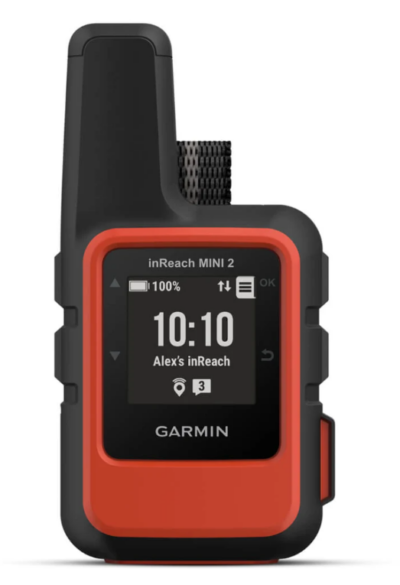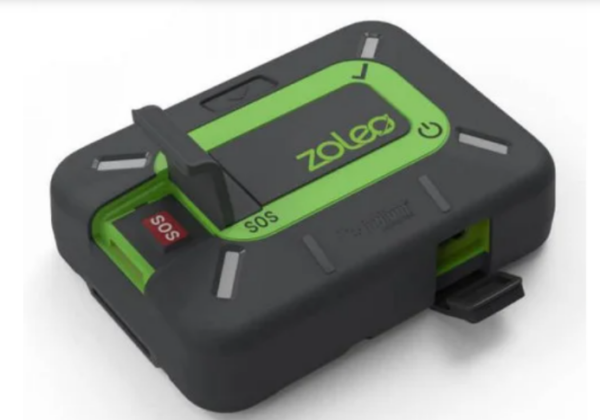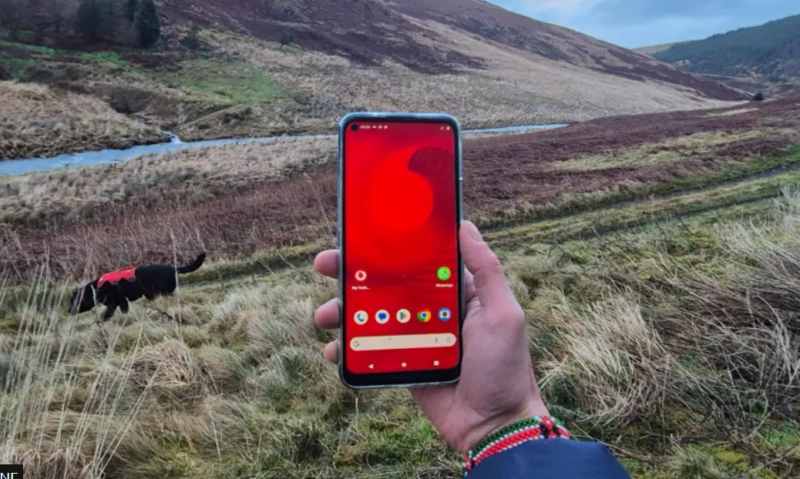Satellite Beacons, Trackers and Phones
Lots of places in the Scottish backcountry have no mobile coverage and its important to always have a way of calling for help if you need it, be it touring, hillwalking and running, mountain-biking or anything else that gets you remote – and you don’t need to go very far in the Highlands to lose mobile cover.
This is where satellite technology comes in very useful and there are a number of options available that will let you raise an alert regardless of how remote you are. It is no longer the preserve of specialists or professionals and now with costs coming down, everyone should have some sort of device – especially if you like to venture out alone.
Personal Locator Beacons (PLB)
PLBs are simple to use in an emergency and very robust as they are designed to operate when immersed in seawater. They work by transmitting your location to a dedicated network of satellites that is then forwarded to the UK rescue co-ordination centre run by the UK Coastguard. They work anywhere on the globe. They have a battery that will last 6-7 years without needing charged, need no on-going subscription fees and can live in your rucksack.
Their main downside is that they cannot be used to track your position or send or receive messages.

The club uses the Fastfind 220 model of PLBs. You can see a video of how they are tested & activated here.
Satellite Trackers/Messengers
This describes devices such as the Garmin inReach Mini and SPOT trackers. These use a different constellation of satellites (typically the Iridium network) and provide the ability for others (such as a partner or friend) to track your location in real-time. They also have an SOS feature that when activated will send an emergency signal to the device’s operator who will then contact the relevant authorities (depending on where you are) to start a rescue (Garmin operate a 24/7 global rescue centre from Houston, Texas). They also offer the ability to send simple text messages too (some allow picture messages too) by pairing with a smartphone.
The only major disadvantage is that they have limited battery life and need charging up. Also the messaging function can cause as much anxiety and confusion as reassurance if the messages you send are vague. They also tend to require a monthly subscription fee that can soon mount up.


Although the Garmin inReach mini2 is the most popular, there are other, lower-cost alternatives like the Zoleo global satellite communicator.
Smartphone-to-Sat
This describes the newly emerging technology that allows calls or messages to be sent from an ordinary smartphone to a satellite, meaning you will always have some for of connectivity in an emergency. Just what depends on whether you are on Apple or Andriod.
iPhones: If you own an iPhone 14 or above then you can use it to send an emergency alert via satellite.
According to Apple:
“With iPhone 14 or later (all models), you can use Emergency SOS via satellite to text emergency services when you’re off the grid with no mobile or Wi-Fi coverage.
Emergency SOS via satellite can help you connect with the emergency services under exceptional circumstances when no other means of reaching the emergency services are available. If you call or text emergency services and can’t connect because you’re somewhere with no mobile and Wi-Fi coverage, your iPhone tries to connect you via satellite.”
To connect to a satellite, you need to be outside with a clear view of the sky and horizon. When you use a satellite connection, the experience is different than sending or receiving a message via mobile connection.”
Apple have said the service is free for the first two years after activation of the phone (at the time of writing they have not clarified what their further plans are)
Find out more about connecting to a satellite with your iPhone
Before you go off-grid, make sure you try the demo so you know exactly what to expect:
To find out how Emergency SOS via satellite works, try the demo
Android: In January 2025, Vodafone made history by making a whatsapp video call from an ordinary smartphone to a satellite. This service isn’t expected to be available to customers in the UK until 2026, but once available it will mean anyone with an Android phone on the Vodafone network should be able to always get a connection (at a price, no doubt). And this will not just be restricted to an emergency text message, but full data connectivity as with 4G/5G. Other operators are sure to follow and this development may end the issue of no connectivity in the Scottish backcountry. Read more about it here.

The big downside to all these Smartphone-to-Sat services are the phones themselves – most smartphones are designed for urban life, are not rugged and have limited battery life. They need protected from the elements and fully charged before heading out (for tips on how to use your smartphone wisely in the hills see the Mountaineering Scotland guidance here). If you do use your phone in the outdoors a lot, look for a ‘tough phone that is ‘IP68’ rated for protection from shock, water and dust/snow. Look for models with a battery rated to 8000mAh or higher – they wont die in the cold.
Satphones. Dedicated satphones do exist already, but they are bulky and expensive and not a sensible option for most hill-goers in the UK
What about GPS? There is a misconception that ‘GPS’ can be used for communications. That’s not how GPS works – those satellites are only used to establish your location. They have no means of receiving or sending any kind of messages or calls. Of course, the PLBs and trackers use the GPS satellites to fix their location, but when it comes to sending that information out, they use different satellites like Iridium or the CORPASS-SARSAT constellation in the case of PLBs.
Conclusion
Whatever option you go for make sure you have some means of getting help. If you rely on your iPhone 14 (and soon Android phones as well) for this, just be aware its putting all your eggs in one basket and there is a lot to be said for still carrying a dedicated emergency beacon like a PLB – when you activate one of those you know it will be treated seriously by experienced people and you will not face the challenge of explaining to a 999 call handler where you are and that no, you don’t know the postcode and no, an ambulance wont be able to reach you!

